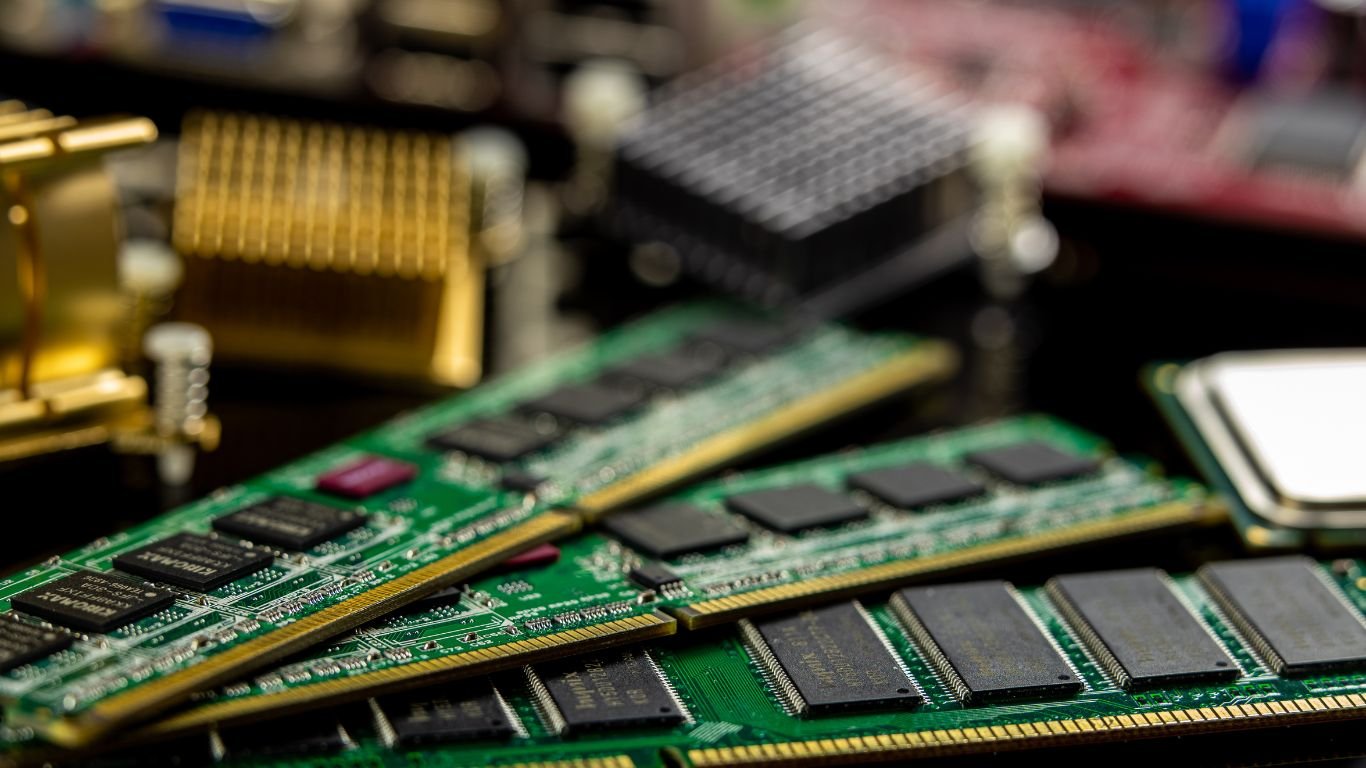Today, we’re looking at DDR4 vs DDR5 RAM and helping you decide if it’s worth upgrading to DDR5. Stick around as we break down the differences and weigh the pros and cons.
What’s the deal with DDR5?
DDR5 is the newest version of RAM, which stands for Random Access Memory. It is the next generation after DDR4. RAM is important for computer performance since it provides fast temporary storage for data that the CPU needs to access rapidly.
DDR5 was released on October 6, 2020 by SK Hynix, offering faster speeds, higher capacities, and improved power efficiency. However, like any new technology, it has its drawbacks. Let’s break it down.
Speed: DDR4 vs. DDR5
When it comes to raw speed, DDR5 takes the cake. Here’s a quick comparison:
- DDR4: Typically ranges from 2133 MHz to 3200 MHz, with some high-end kits pushing 4000+ MHz.
- DDR5: Starts at 4800 MHz and can go up to 6400 MHz or even higher.
In theory, this means DDR5 can transfer data much faster than DDR4. But hold your horses – real-world performance isn’t always as clear-cut.
Capacity: Size Matters
DDR5 also wins in the capacity department:
- DDR4: Maxes out at 32GB per stick for consumer-grade, 256GB for server-grade modules.
- DDR5: It can go up to 128GB per stick (though 24GB and 48GB are more common right now).
For most users, 32GB of RAM is plenty. But if you’re into heavy 3D rendering, video editing or running multiple virtual machines, that extra headroom could come in handy.
Power Efficiency
Here’s where things get interesting. DDR5 operates at a lower voltage than DDR4:
- DDR4: Typically runs at 1.2V
- DDR5: Operates at 1.1V
This might not seem like much, but it can add up, especially in large-scale operations or for laptop users trying to squeeze out every last minute of battery life.
Latency
DDR4 has an advantage over DDR5 when it comes to latency. Despite its slower clock speeds, DDR4 usually has shorter delays between receiving and executing commands.
Lower latency can sometimes outweigh higher clock speeds in real-world applications, especially in tasks that don’t benefit as much from pure bandwidth.
Real-World Performance: Does it Matter?
Here’s the million-dollar question: will you notice a difference in day-to-day use? The answer, as frustrating as it might be, is “it depends.”
For everyday tasks like browsing the web, using Word, or most gaming, the difference between high-end DDR4 and DDR5 is usually not very important. There might be a slight improvement in some benchmarks, but it’s unlikely to make a big difference.
DDR5 can shine in bandwidth-heavy tasks like video editing, 3D rendering, or scientific simulations. But even then, other factors like your CPU and GPU often play a bigger role in overall system performance.
The Cost Factor
DDR5 is more expensive than DDR4. Currently, DDR5 kits can cost 1.5 to 2 times more than DDR4 kits. However, the price difference is decreasing gradually. It is important to keep this in mind when considering DDR5.
Compatibility Considerations
Before you rush out to buy DDR5, remember that it’s not backward compatible with DDR4. You’ll need a motherboard that specifically supports DDR5, which typically means the latest generation of Intel or AMD platforms.
So, is it time to upgrade?
After all that, should you make the switch to DDR5? Here’s a quick guide:
Upgrade to DDR5 if:
- You’re building a new high-end system from scratch
- You work with huge datasets or memory-intensive applications
- You always want the latest and greatest, regardless of cost
- You’re planning for the long-term future of your system
Stick with DDR4 if:
- You’re on a budget
- Your current system is meeting your needs
- You mainly use your PC for gaming or general tasks
- You prefer a more mature, stable technology
The Middle Ground: Wait and See
Wait for DDR5. It will likely have better performance, lower latencies, and more competitive prices. Waiting a year or two may give you more value for your money.
Final Words
At the end of the day, RAM is just one piece of the puzzle. A well-balanced system with a strong CPU, GPU, and fast storage will generally outperform a system with top-tier RAM but weaker components elsewhere.
If you’re building a new high-end system or your work demands the absolute best performance, DDR5 is worth considering. For everyone else, high-quality DDR4 is still more than capable of delivering excellent performance at a more wallet-friendly price.
Remember, the best upgrade is the one that fits your needs and budget. Don’t get caught up in the hype – focus on what works for you.
So, what’s your take? Are you team DDR4 or DDR5? Drop a comment below and let us know your thoughts!
